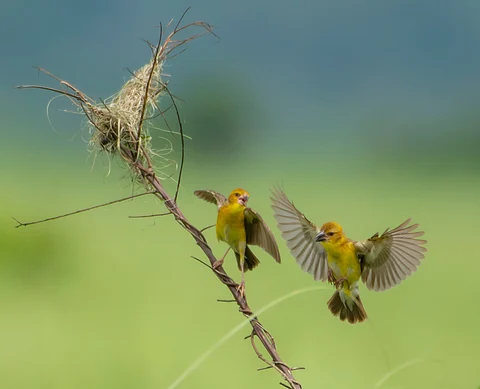
- Destinations
- Experiences
- Stay
- What's new
- Celebrating People
- Responsible Tourism
- CampaignsCampaigns
- SubscribeSubscribe
- Buy Now

In a first-of-its-kind initiative, Kaziranga National Park has conducted a grassland bird census using passive acoustic technology. This survey recorded 43 species, including rare and endangered birds like the Finn’s weaver and Bengal florican.
A team of forest officials, scientists and conservationists undertook the study of the grassland bird population between March 18 and May 25 this year. Seventy per cent of the national park is covered by grasslands.
The survey prioritised 10 species that are either globally threatened or endemic to the Brahmaputra floodplains: the Bengal florican, the swamp francolin, the Finn’s weaver, the swamp grass babbler, the Jerdon’s babbler, the slender-billed babbler, the black-breasted parrotbill, the marsh babbler, the bristled grassbird and the Indian grassbird. Including these, the scientists recorded a total of 43 grassland bird species, including one Critically Endangered, two Endangered and six Vulnerable species, according to the IUCN Red List.
The use of passive acoustic recording monitoring was the highlight of the survey. Six acoustic recorders were placed in 29 locations among tall trees during the breeding season when birds are at their most vocal. The instruments picked up all the birds singing in the landscape.
Different tools were then used to identify the birds based on the recordings. A spectrogram, which is a graphical representation of sound, was created to aid the scientists with identification. The Birdnet tool was also employed, which uses machine learning to try and identify species by bird song.
Grassland birds are an indicator of the good health of an ecosystem, an expert told the media. The national park authorities have been particularly excited by the discovery of a breeding colony of the endangered Finn’s weaver.
(With inputs from a news report)
